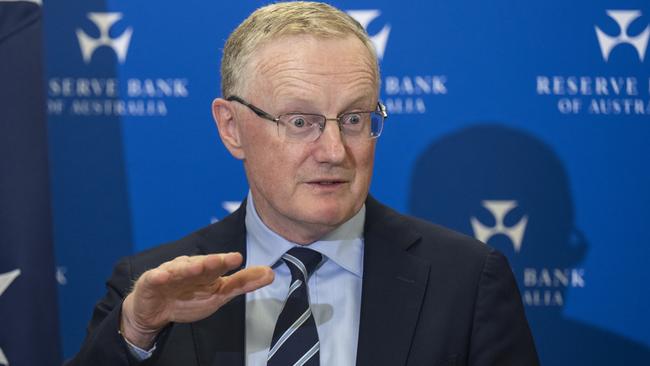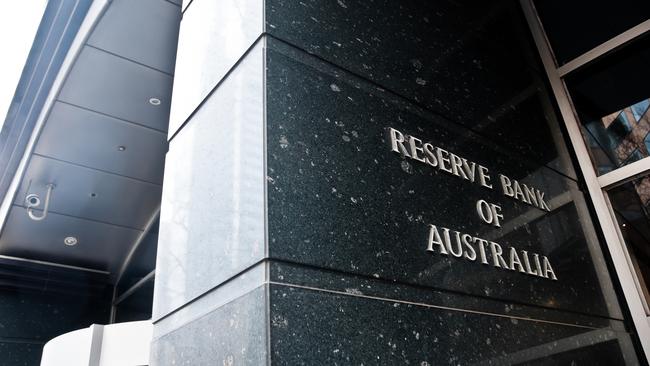Election 2022: Property prices to fall more than expected, RBA warns
Rising rates and declining real wages could stall consumer spending and lead to steep falls in property values, the RBA warns.

Rising mortgage costs and declining real wages could subdue consumer spending and lead to bigger falls in home values than anticipated, the Reserve Bank says.
In minutes from its landmark May 3 board meeting, where it raised its cash rate from 0.1 per cent to 0.35 per cent, the RBA said the nation faced several risks, despite “the underlying strength of the Australian economy and its ongoing resilience”.
“Some Australian households had incurred more debt than previously and many had never experienced rising interest rates,” the central bank said, outlining its policy discussion. “Housing prices in Australia could also be more sensitive to rising interest rates than assumed, which would be likely to result in lower household wealth and consumption.”
The minutes come ahead of Saturday’s federal election, with the contest between the Coalition and Labor intensifying over living costs, the future of real wages, budget costings and housing policy.

Critics claim the Morrison government’s Super Home Buyer Scheme, allowing first-time buyers to transfer as much as $50,000 from retirement savings towards the purchase of a home, would raise dwelling prices.
Opposition Treasury spokesman Jim Chalmers said the proposal would make it harder for people “to get a toehold in the market”.
“People realise this policy is really about two things – about Scott Morrison bulldozing superannuation, and about pushing up house prices,” Dr Chalmers said.
Housing Minister Michael Sukkar said the new scheme was “measured and proportionate”.
“The idea that that’s going to have a material impact on prices is really the last defence of a very desperate campaign to try and undermine what we have seen today from prospective first-home buyers is a ray of hope,” Mr Sukkar told Sky News.
This month’s RBA move was the first hike in official interest rates since November 2010, and the first rise during a federal election campaign since 2007, with the central bank signalling more increases were in prospect to quell inflation, which is expected to peak at 5.9 per cent this year.
The RBA has modelled a financial stability scenario showing highly indebted borrowers face a shock to their budgets if interest rates rise by two percentage points over the next two years, which could cause a 15 per cent drop in real home values.
On Tuesday, ANZ Bank revised down its forecasts for residential property prices. ANZ now expects capital-city housing prices to fall by around 3 per cent this year and 8 per cent next year as mortgage rates rise steeply to 4.75 per cent by mid-2023.
“Macroprudential tightening, solid supply and constrained affordability will also be headwinds for house prices,” ANZ senior economists Felicity Emmett and Adelaide Timbrell said in a property insight.
CBA head of Australian economics Gareth Aird told The Australian the minutes highlighted the “high degree of uncertainty the RBA was facing in the period ahead”, while shifting its focus to a broader range of forward-looking evidence about consumer behaviour and prices.
Mr Aird said Wednesday’s wages and Thursday’s labour force figures, although lagging indicators, were key factors for the RBA’s next move, which he says could be a 40-basis-point rise in June if the data was stronger than predicted.
“We expect flat house prices over this year and an 8 per cent fall in 2023, but it all depends on how aggressively the RBA raises interest rates,” he said.
The RBA minutes noted there was a risk inflation, now 5.1 per cent, would become more persistent. “Members observed that it would be more difficult to return inflation to the target if the inflation psychology in Australia were to shift in an enduring way,” the bank said.
The board meeting noted doubts to the outlook, including global supply-side problems.
“Domestically, there was uncertainty about how household spending would respond to the erosion of real wages, as wages have not kept pace with consumer prices,” the minutes said.
“There is no contemporary experience as to how labour costs and prices in Australia would behave at an unemployment rate below 4 per cent.
“Members also considered how households would respond to rising interest rates, given the high level of household debt and the significant increases in financial buffers over the preceding couple of years.”
Outlining future moves, RBA governor Philip Lowe said it was not unreasonable to expect the cash rate to rise to 2.5 per cent.
“How fast we get there, and whether we get there, is going to be determined by events,” Dr Lowe said earlier this month.
The RBA board contemplated a larger cash-rate hike to 0.5 per cent as “an argument for an increase of 40 basis points could be made given the upside risks to inflation and the current very low level of interest rates”.
“However, members agreed that the preferred option was 25 basis points,” the minutes said.
“A move of this size would help signal that the board was now returning to normal operating procedures after the extraordinary period of the pandemic.”








To join the conversation, please log in. Don't have an account? Register
Join the conversation, you are commenting as Logout